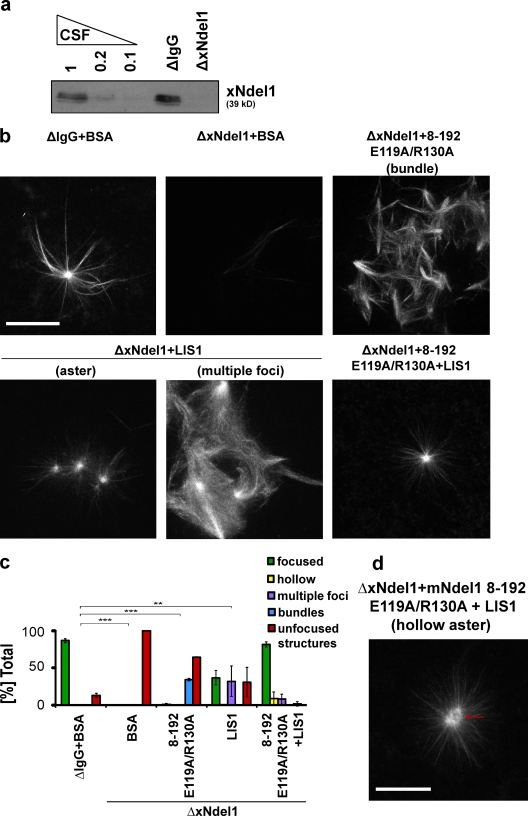Figure 5.
Ndel1 recruits L IS1 to drive aster formation, and a mutant that cannot bind L IS1 generates microtubule bundles. (a) Depletion level quantification for experiment shown in panel d. (b) The role of Ndel1 is to recruit LIS1 to drive aster formation. The interaction between LIS1 and Ndel1 is required for aster formation, but Ndel1 also has a LIS1-independent function. Representative images of the predominant microtubule structures assembled in Ndel1-depleted extracts rescued with the indicated recombinant protein(s). Note that the Ndel1 proteins with mutated LIS1-binding residues are unable to form asters, but the resulting structures are more organized than in Ndel1-depleted extracts (bundles). Addition of 350 nM exogenous LIS1 to Ndel1-depleted extracts partly rescues microtubule focusing, whereas addition of 350 nM LIS1 and 100 nM Ndel18–192 E119A/R130A (8–192 E119A/R130A) rescues significantly better. (c) Quantification of microtubule structures from three independent experiments where Ndel1-depleted extracts were rescued with the indicated mouse Ndel1 proteins and/or LIS1; over 100 microtubule structures were quantified; asterisks indicate statistically significant differences in percentage of focused asters (Student’s t test with P < 0.05; ** indicates P < 0.005; *** indicates P < 0.0005). (d) Representative image of a hollow aster. Image is shown at different contrast than in panel b to emphasize presence of a hollow center of the aster. Bar, 20 µm.

